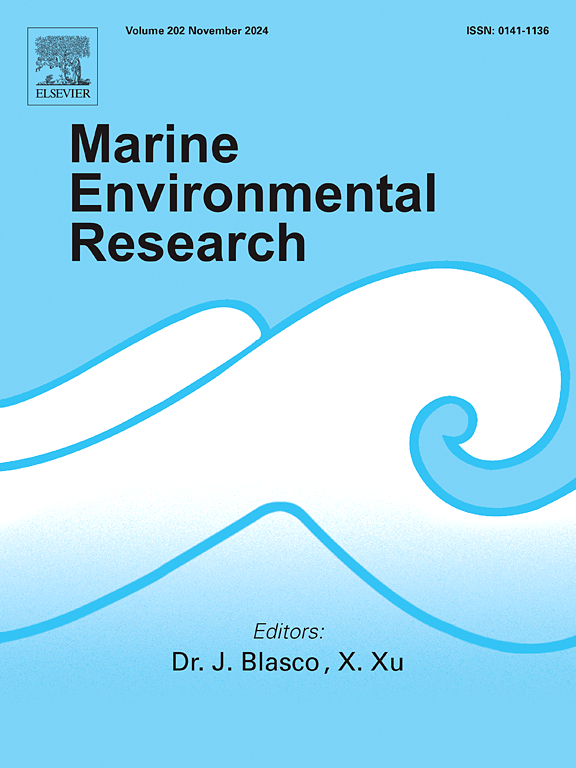Physiological and molecular responses of tropical Seagrass Enhalus acoroides exposed to simultaneous high temperature and hypoxia stress
IF 3
3区 环境科学与生态学
Q2 ENVIRONMENTAL SCIENCES
引用次数: 0
Abstract
High temperature and hypoxia pose significant threats to coastal ecosystems, often co-occurring and intensifying damage to seagrass meadows. While the independent effects of these stresses have been extensively documented, their combined impact on seagrasses remains underexplored. This study investigates the effects of high temperature and hypoxia on Enhalus acoroides, a dominant tropical seagrass. Results indicated that E. acoroides could tolerate high temperature (35 °C) and hypoxia (2.65 mg L−1) individually for 24 h. However, exposure to both stresses simultaneously led to severe, irreversible physiological damage, highlighting a synergistic effect that surpassed the additive impact of each stressor alone. Combined stresses markedly impaired PSII, reduced photosynthetic rate and chlorophyll content, alongside elevated oxidative stress. Transcriptomic analysis indicated that high temperature intensified metabolic stress, while oxygen deficiency forced a shift from aerobic to anaerobic respiration, resulting in energy deficits. Furthermore, the lack of oxygen caused the accumulation of electrons, which triggered excessive production of reactive oxygen species. Despite the antioxidant enzyme system's active response, it was unable to mitigate the overwhelming oxidative stress, leading to irreversible oxidative damage. The above results suggested that in the context of global warming and eutrophication, the combined effects of high temperature and hypoxia may accelerate the degradation of seagrass meadows at a far greater rate than previously anticipated.

求助全文
约1分钟内获得全文
求助全文
来源期刊

Marine environmental research
环境科学-毒理学
CiteScore
5.90
自引率
3.00%
发文量
217
审稿时长
46 days
期刊介绍:
Marine Environmental Research publishes original research papers on chemical, physical, and biological interactions in the oceans and coastal waters. The journal serves as a forum for new information on biology, chemistry, and toxicology and syntheses that advance understanding of marine environmental processes.
Submission of multidisciplinary studies is encouraged. Studies that utilize experimental approaches to clarify the roles of anthropogenic and natural causes of changes in marine ecosystems are especially welcome, as are those studies that represent new developments of a theoretical or conceptual aspect of marine science. All papers published in this journal are reviewed by qualified peers prior to acceptance and publication. Examples of topics considered to be appropriate for the journal include, but are not limited to, the following:
– The extent, persistence, and consequences of change and the recovery from such change in natural marine systems
– The biochemical, physiological, and ecological consequences of contaminants to marine organisms and ecosystems
– The biogeochemistry of naturally occurring and anthropogenic substances
– Models that describe and predict the above processes
– Monitoring studies, to the extent that their results provide new information on functional processes
– Methodological papers describing improved quantitative techniques for the marine sciences.
 求助内容:
求助内容: 应助结果提醒方式:
应助结果提醒方式:


